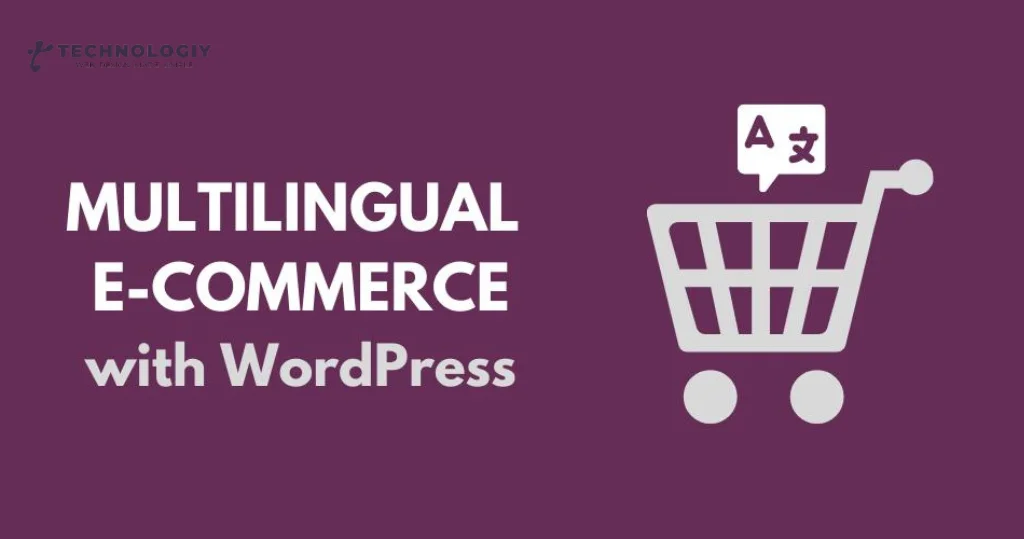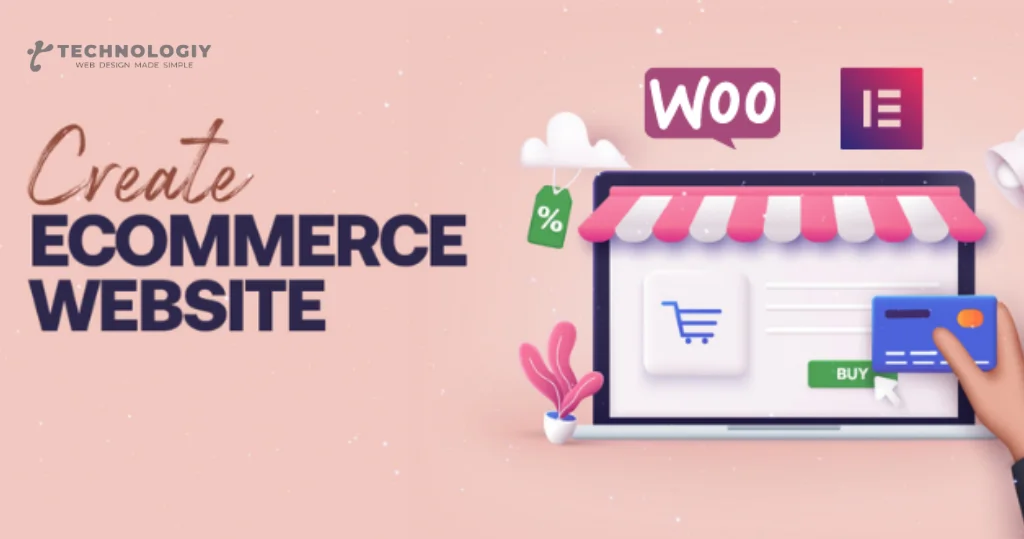The Ultimate Guide to Setting Up a Multilingual Ecommerce on WordPress: Are you ready to take your ecommerce business to the next level and tap into international markets? Setting up a Multilingual Ecommerce on WordPress is the perfect solution to reach a global audience and boost your sales. In this comprehensive guide, we will walk you through all the steps you need to take to create a successful Multilingual Ecommerce on WordPress.
Why Go Multilingual Ecommerce with WordPress?
Expanding your ecommerce business to cater to international customers is a smart move. By making your store multilingual, you can break down language barriers and provide a seamless shopping experience for customers around the world. This opens up a world of opportunities, allowing you to tap into new markets and increase your customer base.
Getting Started with WordPress:
WordPress is a powerful and user-friendly platform for creating websites, including ecommerce stores. If you haven’t already, start by setting up your WordPress site. Choose a reliable web hosting provider, install WordPress, and select a suitable theme for your ecommerce store. Make sure the theme you choose is compatible with multilingual plugins, as this will be crucial for creating a multilingual website.
Choosing a Multilingual Plugin:
To make your WordPress store multilingual, you’ll need to install a multilingual plugin. There are several options available, but some of the most popular ones include WPML (WordPress Multilingual Plugin) and Polylang. These plugins allow you to easily translate your website content, including product descriptions, checkout pages, and more.
Translating Your Content:
Once you have installed a multilingual plugin, it’s time to start translating your website content. Begin with the most important pages, such as the homepage, product pages, and checkout pages. You can either hire professional translators or use machine translation tools to speed up the process. Keep in mind that accuracy is key, so it’s best to have your content reviewed by a native speaker before publishing.
Optimizing for SEO:
When creating a multilingual ecommerce store, it’s essential to optimize your website for search engines in each language. Conduct keyword research for each target language and incorporate these keywords naturally into your content. Also, make sure to create unique meta tags and optimize your URLs to improve your store’s visibility in search engine results.
Managing Inventory and Orders:
Setting up a multilingual ecommerce store also involves managing inventory and orders efficiently. Make sure your inventory management system supports multiple languages and currencies, allowing you to keep track of stock levels and process orders seamlessly. Additionally, consider integrating a reliable payment gateway that supports multiple currencies to provide a smooth checkout experience for your international customers.
Offering Excellent Customer Support:
Providing excellent customer support is crucial for the success of your multilingual ecommerce store. Make sure you have support agents who can communicate in the languages of your target markets. Implement a live chat feature or provide a dedicated email address for customer inquiries in different languages. Promptly respond to customer queries and resolve any issues they may have to ensure a positive shopping experience.
Localizing Your Marketing Efforts:
To effectively market your multilingual ecommerce store, it’s important to localize your marketing efforts. This includes translating your email newsletters, social media posts, and advertising campaigns into the languages of your target markets. Adapt your marketing messages to the cultural preferences and buying habits of your international customers to maximize your chances of success.
Testing and Optimizing:
Once your multilingual ecommerce store is up and running, it’s essential to continuously test and optimize your website. Monitor key metrics such as conversion rates, bounce rates, and average order value to identify areas for improvement. Conduct A/B tests to refine your website design, product offerings, and marketing strategies. By regularly analyzing and optimizing your store, you can ensure that it remains competitive and profitable in the long run.
Setting up a Multilingual Ecommerce on WordPress is a game-changer for expanding your business globally. By breaking down language barriers and providing an excellent shopping experience for international customers, you can take your ecommerce business to new heights. Follow the steps outlined in this ultimate guide, optimize your website for search engines, offer top-notch customer support, and continuously test and optimize your store. With the right strategy and tools, you can create a successful Multilingual Ecommerce on WordPress and unlock a world of opportunities.
Top Plugins for Creating a Multilingual Ecommerce on WordPress:
Are you looking to expand your ecommerce business and target a wider audience? If so, creating a multilingual website is a smart move. With the right plugins, you can easily translate your website content into multiple languages, making it more accessible to potential customers from around the world. In this blog post, we will explore the top plugins for creating a Multilingual Ecommerce on WordPress, helping you take your online store to the next level.

WPML (WordPress Multilingual Plugin):
WPML is one of the most popular and reliable plugins for creating Multilingual Ecommerce on WordPress. It allows you to translate all aspects of your ecommerce website, including product descriptions, categories, and checkout pages. With its easy-to-use interface, you can manage translations efficiently and provide a seamless experience for your international customers. WPML also offers excellent compatibility with other WordPress plugins and themes, ensuring that your website functions smoothly in multiple languages.
Polylang:
Polylang is another powerful plugin that enables you to create a Multilingual Ecommerce on WordPress. This plugin is known for its simplicity and flexibility, making it a great choice for beginners. With Polylang, you can easily translate your website content and manage multiple languages without any hassle. It also offers a language switcher widget, allowing users to switch between languages effortlessly. Whether you have a small online store or a large ecommerce platform, Polylang can cater to your multilingual needs effectively.
Weglot:
Weglot is a user-friendly plugin that streamlines the process of translating your ecommerce website. With its automatic translation feature, Weglot can quickly translate your content into various languages with just a few clicks. You can also edit and optimize the translations to ensure accuracy and maintain a consistent brand voice. Weglot integrates seamlessly with WordPress and offers a range of customization options to match your website’s design. Additionally, it provides an easy-to-use language switcher, allowing visitors to switch between languages effortlessly.
Translate Press:
TranslatePress is a unique multilingual plugin that allows you to translate your website directly from the front-end. With its intuitive interface, you can easily edit translations by simply clicking on the elements you want to translate. TranslatePress supports both manual and automatic translations, giving you the flexibility to choose the method that suits your needs. It also offers compatibility with page builders, making it easier to translate complex layouts. With TranslatePress, you can create a multilingual ecommerce website without any coding knowledge.
Multilingual Press:
Multilingual Press is a robust plugin that focuses on providing a scalable solution for creating Multilingual Ecommerce on WordPress. It uses a unique approach, allowing you to create separate websites for each language. This means that each language has its own domain or subdomain, providing a fully independent translation. Multilingual Press also offers an efficient linking system, enabling you to connect corresponding pages in different languages. With its advanced features and scalability, Multilingual Press is an excellent choice for large ecommerce websites with multiple language requirements.
In conclusion, creating a Multilingual Ecommerce on WordPress can significantly expand your customer base and increase your sales. By using the right plugins, such as WPML, Polylang, Weglot, TranslatePress, or MultilingualPress, you can easily translate your website content into multiple languages, making it accessible to a wider audience. Choose a plugin that suits your needs and start reaching out to international customers today. Don’t miss out on the opportunity to grow your ecommerce business globally!
Multilingual Ecommerce for WordPress Users:
Unlocking the Power of Global SalesIn today’s interconnected world, reaching a wider audience is the key to success for any online business. With the increasing globalization of commerce, catering to customers in different parts of the world has become paramount. That’s where multilingual ecommerce for WordPress users comes into play. By harnessing the power of this powerful combination, you can expand your business horizons and tap into new markets like never before.
Why Multilingual Ecommerce?
Multilingual ecommerce allows you to break down language barriers and connect with potential customers from all corners of the globe. By offering your website and online store in multiple languages, you can provide a seamless, personalized experience to visitors who prefer to browse and shop in their native language. This not only enhances user experience but also builds trust and credibility, leading to increased conversions and customer loyalty.
The Power of WordPress:
WordPress, the world’s most popular content management system, is known for its user-friendly interface and extensive customization options. Whether you’re a small business owner or a seasoned ecommerce entrepreneur, WordPress offers a robust platform to build and manage your online store. With its vast array of plugins and themes, you can easily integrate multilingual functionality into your WordPress website, making it a versatile choice for multilingual ecommerce.
Key Benefits of Multilingual Ecommerce On WordPress Users:
Global Reach:
By offering your website in multiple languages, you can reach a wider audience and tap into new markets. This opens up a world of opportunities for expanding your customer base and boosting sales.
Enhanced User Experience:
When visitors can access your website in their preferred language, it creates a positive impression and improves their overall experience. This leads to increased engagement, longer browsing sessions, and higher chances of conversion.
Increased Credibility:
Providing content in different languages showcases your commitment to serving diverse customers. It helps build trust and credibility, positioning your brand as a global player in the ecommerce landscape.
SEO Benefits:
Multilingual websites have a higher chance of ranking in search engine results for relevant keywords in different languages. This can significantly improve your organic visibility and drive targeted traffic to your online store.
Competitive Advantage:
Offering multilingual ecommerce sets you apart from competitors who may not have tapped into this lucrative market. It gives you a competitive edge by catering to a wider range of customers and increasing your chances of securing international sales.
Getting Started with Multilingual Ecommerce on WordPress, now that you understand the benefits, it’s time to get started with Multilingual Ecommerce on WordPress.
Here are some steps to help you on your way:
Choose a Reliable Translation Plugin:
There are several translation plugins available for WordPress, such as WPML, Polylang, and Weglot. Research and select the one that best suits your needs in terms of functionality, ease of use, and compatibility with your WordPress theme and plugins.
Plan Your Language Strategy:
Determine which languages to target based on your target audience and market research. Consider factors such as customer preferences, market size, and competition. Start with the most important languages and gradually expand as your business grows.
Translate Your Content:
Once you have your translation plugin set up, start translating your website content. This includes product descriptions, category names, checkout process, and any other relevant text. Ensure accurate translations by using professional translators or translation services.
Test and Optimize:
After translating your content, thoroughly test your multilingual website for functionality, usability, and consistency. Make any necessary adjustments and continuously optimize your website based on user feedback and analytics data.
Localize Your Marketing Efforts:
To maximize the impact of your multilingual ecommerce strategy, tailor your marketing campaigns to different regions and languages. This includes localized SEO, social media advertising, and targeted email marketing.
In conclusion, embracing Multilingual Ecommerce on WordPress users can be a game-changer for your online business. By catering to global customers in their preferred language, you enhance user experience, build credibility, and unlock new growth opportunities. With WordPress’s flexibility and the right translation plugin, you can seamlessly integrate multilingual functionality into your website and tap into the vast potential of the global market. Don’t let language barriers limit your business potential – go multilingual and expand your horizons today!
